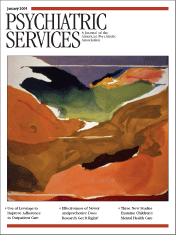Treating human bodies as commodities is an ancient tradition. The Bible permits the purchase of slaves and sets rules for indigent Israelites who sell themselves into slavery (Leviticus 25:39-46). The Aztecs fed human blood and hearts to their god Huitzilopochtli, while ancient Greeks loved pottery that pictured male athletes with huge, powerful muscles.
We have abolished slavery and human sacrifice, and men are as likely to show off their technical toys as their bulging biceps, but we have found new ways to treat bodies and their parts as commodities to be rented out or sold. Commodifying Bodies illustrates this point with articles written by nine different authors—seven anthropologists and two sociologists. Turks and Brazilians sell their kidneys to feed their families. Journalists eager to sell papers "commodified" the 739 victims of the 1995 Chicago heat wave by showing photographs of morgue administrators overwhelmed by hundreds of corpses and attendants loading the bodies into ten 48-foot-long refrigerated trucks. Sperm banks pay donors for semen. Prostitutes rent their bodies out to procure drugs. Boxing managers exploit fighters to provide a brutal, bloody spectacle to cheering crowds. Medical researchers obtain patents on human cell lines.
The book justly condemns physicians who violate the Hippocratic oath by removing healthy kidneys from destitute Russians. More controversial, however, is the authors' criticism of medical research on DNA samples in cases in which the donors face virtually no risk of medical harm. How is such research different from what the authors themselves did—extract the story from those they interview, leave the scene, and write a journal article?
Clinical and anthropologic perspectives differ. As a clinician, I hear the stories of my patients every day, then search for theories that will explain what I heard. The authors of Commodifying Bodies appear to have started with theories, and then looked for people's stories to confirm and illustrate their theories. I sometimes struggle to leave my patients' stories behind when I go home. Anthropologists struggle to find the stories, spending hours obtaining grants, and looking for people who know other people who can find them people to interview. I was frustrated by the stories in this book, which were often flat, lifeless fragments devoid of the richness, longitudinal perspective, and complexity of the stories I hear every day. We learn that Mr. Tati bought a kidney, suffered a heart attack, and recovered. Yet we know nothing about his life before or after his hospitalization. We do not even know whether he had a family.
I searched in vain for anything of clinical relevance. I wanted the article about prostitutes to enlighten me so that I could understand my patients better and help them. Learning that "the objectification process that allows these women to sell their bodies goes along with a progressive fragmentation of their bodily experience" really won't help me next Monday when I see a depressed woman who uses drugs and sells her body.
Nevertheless, the essays did broaden my perspective. This book is clearly a serious scholarly work. I encountered new and interesting words, such as "enframing," and heard points of view I would never experience while reading the American Journal of Psychiatry.

